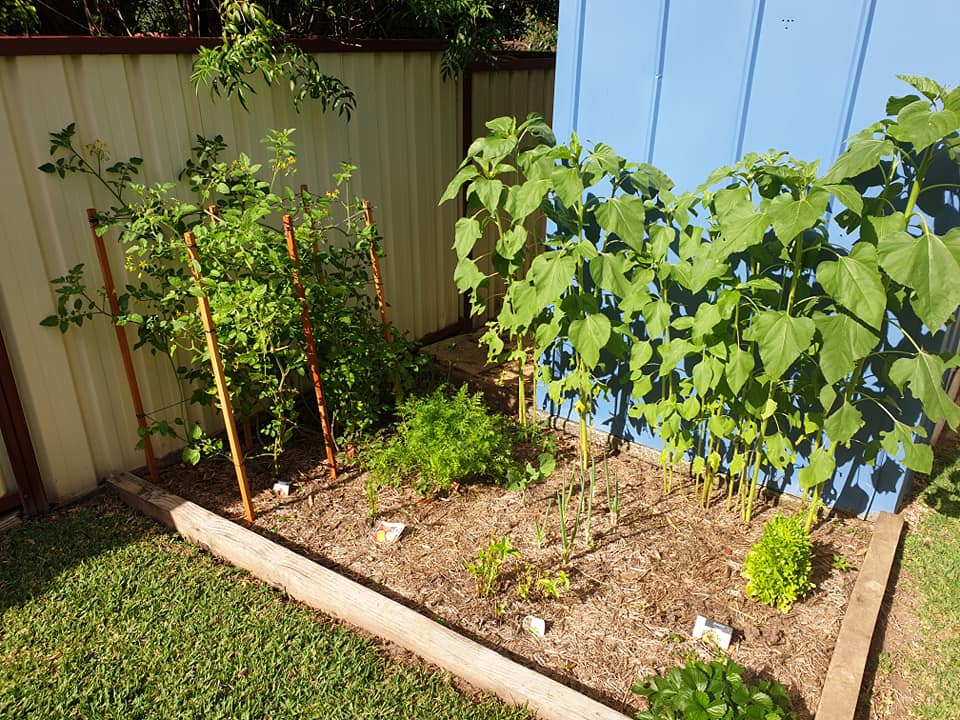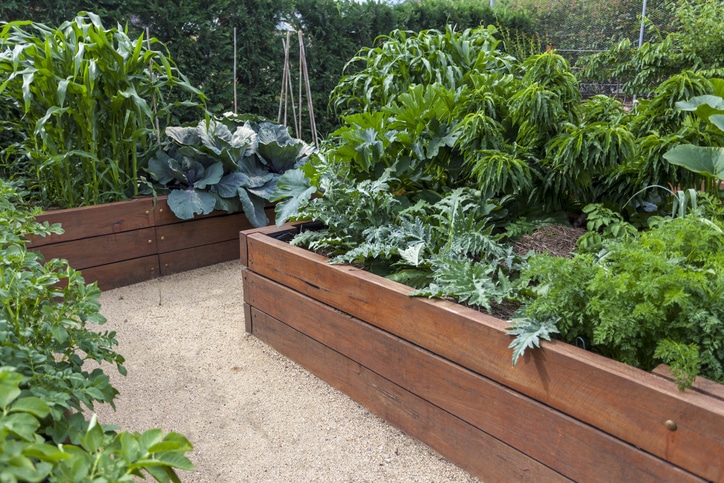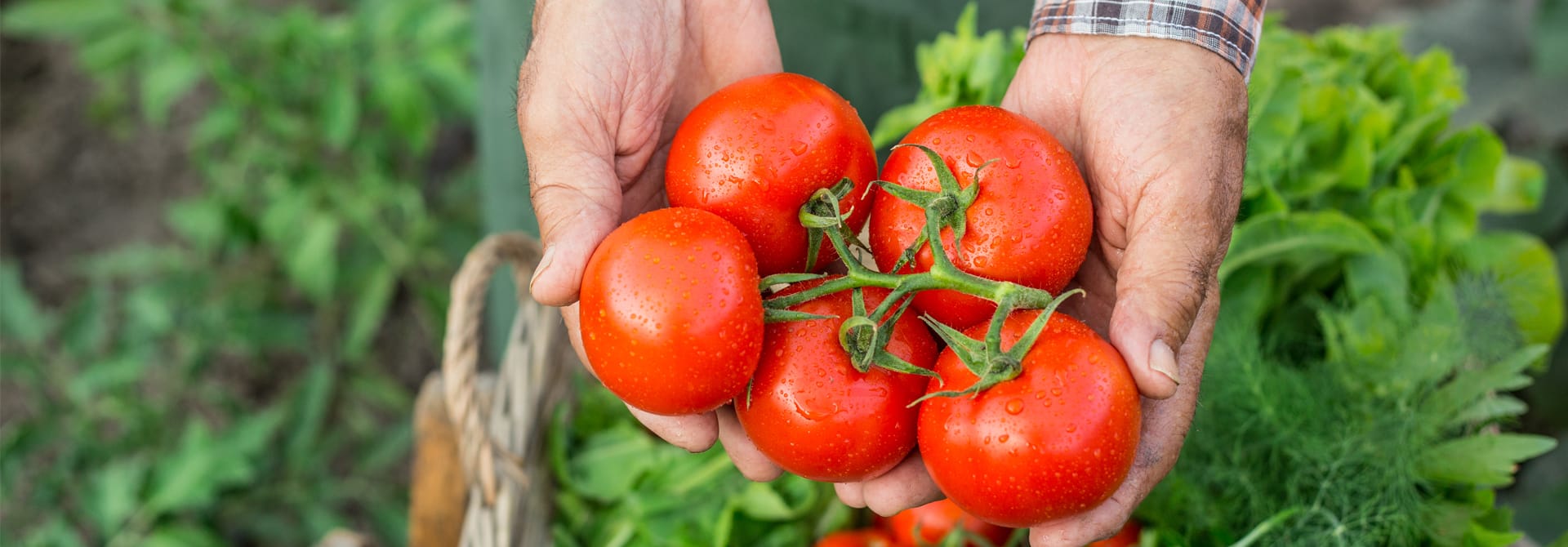Create Your Very Own Spring Veggie Patch on the Blue Mountains
Up here in the Blue Mountains our four distinct seasons bring their own delights and individual characteristics. Spring, arguably the ‘prettiest’ season, heralds beautiful blossoms, daffodils and leaves re-appearing on desolate trees – it’s also the best time to get out into the garden and create your very own veggie patch.
Location, Location, Location
Before we can do any planting, we need to work out the best place to position your veggie patch and here, sunshine is the key. Find the sunniest place in your garden. For most of us, this means somewhere north facing – even if your back yard is south facing, usually towards the back of your property (away from the shadow of your house), you’ll find a sunny spot that catches the all day northern sun. Sometimes the side of your house can be the best spot if you have the room.
Constructing Your Patch
This is not as hard as you might imagine – there are many simple ways to construct your garden of goodness. As a rule, you need some sort of separation from your lawn. This partition gives you a dedicated area to turn the soil, cultivate seedlings and add nutrients. Planting directly into your lawn creates all kinds of issues when it comes to mowing, plus grass can quickly overtake and destroy your precious new flora. A simple way to create your patch is by dividing a small area of your lawn with treated pine timber. Treated pine is easily obtainable at any of the big hardware stores and some of them will even cut it for you to size upon your purchase. Then, it’s just a matter of digging up the grass area and laying the timber into the area you’ve already identified. See below example of a simple treated pine veggie patch.

Make sure when you line your area with treated pine, you back-fill your patch with soil so that the timber stays in place. Also, ensure that you use H4 treated pine which is specifically processed to keep away any termites.
While the above method produces great results, the gold standard is to raise your patch to allow for the best drainage possible. A raised patch can also save your back as you don’t have to bend over as far when you’re already kneeling down to plant, pick and tend for your vegetables.
Raised beds are constructed similarly to the example above, however, you’ll need to add more layers of timber on top to create the higher level. You’ll also need to screw off the joining pieces of timber to hold them in place as the soil won’t do the trick for you when it’s raised above the grass. See example below.

If you’re not comfortable with building a raised bed yourself, all of the big hardware suppliers sell pre-made beds that you can purchase, pop straight on the ground, fill with soil and plant away.
Another option if you’re tight on space, is to grab some planter boxes. These can easily be moved and rearranged, and you can adjust to meet the direction of the sun. Planter boxes are a perfect option if your outdoor space is a small terrace, balcony, or even window sill.
Whatever the space you have, there’s no reason you can’t start to grow your own patch of goodness right away.
Springtime Planting
The hot summer sun is often detrimental to new and growing vegetables – it damages their establishing root system and during a heatwave, can kill off new growth entirely so early spring is the perfect time to set up your patch. Keep in mind though, there are quite a few edible varieties that are best cultivated in the height of summer and even in the depths of winter, but for now, let’s focus on our three picks for the best springtime selection.
Lettuce
No longer when we think of lettuce, are we obliged to picture the good old iceberg, with its crunchy pale green wrap-around leaves. We know they’re a great choice and a favoured classic, but there are so many other options that are even easier to grow. Our favourite is butter lettuce. Butter’s dark green leaves are packed with 6 times the amount of vitamin A and over 4 times the amount of vitamin K when compared to the old iceberg. There’s also a substantial difference in folate and magnesium levels which help with your hair and skin as well as muscle relaxation.
You can buy butter or ‘butterhead’ lettuce seeds from most local garden centres. Keep in mind that you should only place the seeds a few millimetres deep, maybe ½ centimetre and keep the soil as moist as possible to promote fast growth, then water a little every day. Once you see the lettuce heads, mulch around them with a sugar cane or similar mulch to keep the moisture in the ground and also protect against the harsh sun as the summer approaches. If there’s an unseasonably hot spring day, make sure to give your butter lettuce a lot of extra water and even consider covering temporarily with a shade cloth or similar. Otherwise, let the strength of the full spring sun work its magic. Soon, you’ll be enjoying the soft nutritious leaves of your lettuce on your very own table – how ‘paddock to plate!’
Pumpkin
This sweet and tasty vegetable, full of nutrition and flavour is a favourite in the winter kitchen – think risottos, roast dinners and of course pumpkin soup. Now is the time to start harvesting your own pumpkin crop. Keep in mind though, this vegetable can take up a little more room than others so it’s best to avoid growing pumpkins if space is at a premium. Starting your pumpkin journey can be as simple as planting the seeds you cut out of your pumpkin when you were preparing your roast dinner. Take the seeds, and clean them in fresh cold water to remove the pumpkin pulp and then sow them around 2 to 3 centimetres deep in your patch.
You can also buy ready to plant seeds but remember, make sure you have plenty of space around your pumpkins as they can grow quite big. If you plant your pumpkins now, in the springtime, you’ll have lovely big vegetables by the time the cooler weather comes around. Pumpkins need to be watered regularly, especially in the hot summer months and they also need your patience. Unlike the lettuce above, these plants are slow to mature, but will provide some of the tastiest and healthiest treats to come out of your patch.
Tomatoes
Imagine a gorgeous sun ripened tomato sitting proudly in your barbecue salad, or a burst of sweetness as you chew through a slice of a freshly made lasagne – and the best part? They came straight out of your backyard! Tomatoes really are one of the most versatile veggies that can come out of any patch and will always add amazing flavours to any dish. They work well in spring and summer salads to add a zesty freshness, but also make our winter meals sing with flavour. Tomatoes can be grown from seeds or you can buy them as seedlings.
We recommend grabbing yourself some seedlings, especially here on the Blue Mountains where many spring mornings can be a little chilly. Taking the weather into account, we recommend to hold back planting your seedlings until at least mid-spring so that the warmer weather has truly set in – tomatoes don’t go well with frosts and very cold weather. When planting your tomato seedlings, give them space, it may look like the seedlings are too far apart when you plant them, but this will change when they come to grow. Half a metre, or just over is adequate for spacing. You’ll also need to add some tomato stakes to hold the plants once they start to fruit. Aside from stakes, you can buy a specialised tomato trellis and guide them along this as needed. Tomatoes need a lot of water, especially when the hot days arrive later in the year so make sure to keep the water up to them and mulch them with a sugar cane (or similar) to keep as much moisture in as possible.
If you’re planting your tomatoes in a restrictive space, just choose 1 or 2 seedlings of the smaller variety, such as cherry – however these sweet little treats prove that big things definitely come in small packages when it comes to their robust flavour.
As you can see, it’s not too hard for you to create your very own fresh food aisle right in your own backyard, on your terrace, or even on a smaller scale on your window sill. It will provide you with the tastiest and healthiest bounty with a little care and planning, and best of all, it’s so much cheaper than buying from the major supermarkets.
At Springwood Sports Club, our own veggie patch has recently been established to provide Gather with the tastiest seasonal flavours, enhancing your favourite dishes with fresh cherry tomatoes, rosemary, carrots, radishes, rocket lettuce and much more. To view our seasonal menu at Gather, where you can sample our fresh ingredients, please click here.


